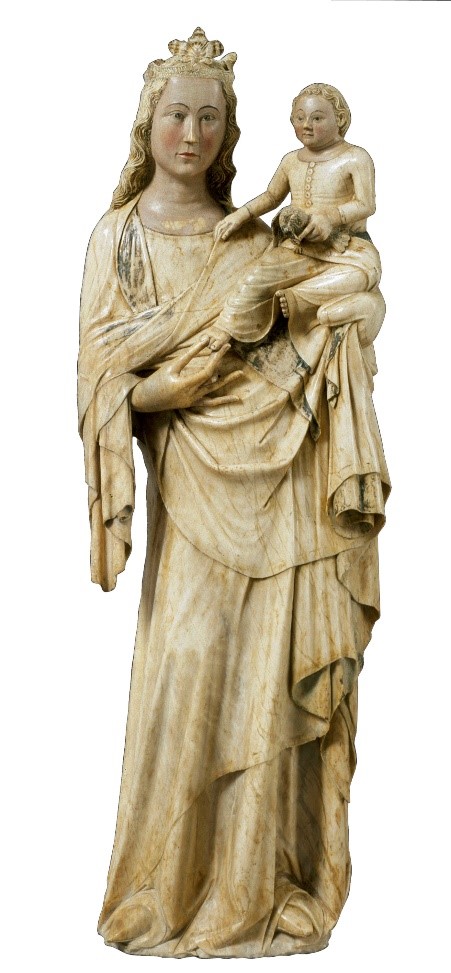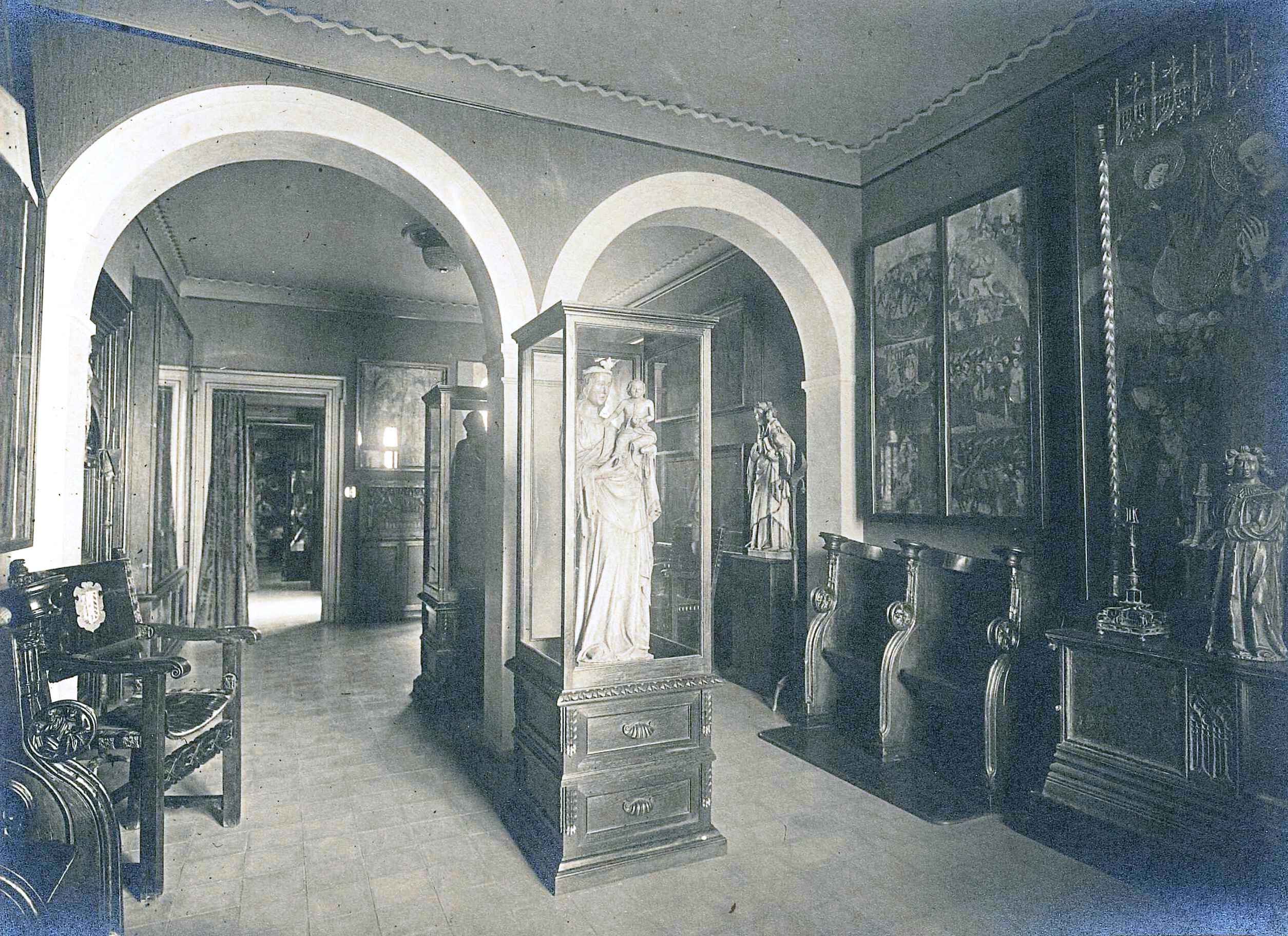Mireia Berenguer
The Gothic sculpture Virgin Sallent de Sanaüja, today part of the collection of the Museu Nacional, has a curious story behind it.
Lluís Plandiura i Pou (1882-1956), one of the major collectors of Catalan art, gathered together, throughout his life, thousands of artistic objects from all periods, until he ended up creating an authentic museum in his home; a three-storied building, situated in the Barcelona neighbourhood of la Ribera just in front of the old market of the Born. This museum, overflowing with works of art, had to close its doors in 1932 when, so as to resolve the economic problems that had affected his business in the colonies, Plandiura sold his collection to the Board of Museums.
In any case, and contrary to the norms that many art collectors follow, jealous of their intimacy, while the museum remained open, Plandiura wanted to turn his private collection into a public museum. That’s why he wanted to open the doors of his home and to invite anyone who felt the attraction of enjoying the pleasures offered by art for a while, but also at the same time, to open the doors to all those who went for professional reasons. Many illustrious people visited his collections and there are a few anecdotes to tell about some of them. Today, however, we will comment on just one of them.
One day an American millionairess, the name of whom we don’t know for sure, visited the industrialist accompanied by Francesc Cambó, who at that time held the position of Financial Minister. On passing through the room in which Plandiura exhibited the Gothic carvings, she remained spellbound in front of a Virgin with Child, from the 14th century. It was none other than the Virgin, which came, according to the tradition, from Sallent de Sanaüja, in the Solsonès.
Photo of the room in which Plandiura exhibited the Virgin of Sallent, in 1926.Fotos: Arxiu Fotogràfic de Barcelona
It is an alabaster carving with the remains of polychrome and gilded with gold leaf, which nowadays can be found located in room 20 of the Gothic art collection. It is one of the most successful Marian sculptural works from the lower middle ages in our collection, due to its beauty and artistic quality, while also being elegant, in representation of the Virgin with child in arms. It is a carving which resembles another Virgin, that of Boixadors, which is conserved in the Museu Episcopal of Vic, of very similar stylistic characteristics.

Virgin of Sallent. Museu Nacional d’Art de Catalunya
The piece that the anecdote we mentioned above refers to, had been acquired by a Barcelona collector in July 1921, through one of his agents, Ignacio Pollak, an Austrian Antique dealer with whom Plandiura had established commercial relations.

Technical proceeding to inventory the objects in the room Collector Plandiura. Photo: Barcelona Photographic Archive
The sculpture in question was liked so much by the lady that she didn’t think twice; she took out a cheque book and wrote down: one thousand dollars. The collector responded that it wasn’t for sale. The visitor left that room and strolled around the others, and then suddenly took out her cheque book once again and wrote down: one hundred and twenty five thousand dollars. There was another clear refusal by the collector and a polite deviation of the conversation. The millionairess offered up to one hundred and fifty thousand dollars for the piece thinking that Plandiura wouldn’t now be able to resist that succulent figure. The Catalan collector, however, once again refused the offer, so the wealthy amateur gave him a blank cheque: Plandiura, once more, declined. Nevertheless, what he couldn’t refuse was to let her contemplate the Virgin for the last time; a somewhat desperate request from the wealthy North-American lady that, this time, received his consent.
It is said that she stayed there for a whole hour!
Enllaços relacionats:
“L’obra d’un home sol”. La Col·lecció Plandiura. Mirador, 1932, p. 7.
“El Museu d’Art de Catalunya és obert”. La Rambla, 1934, p. 12
“L’escultura medieval en la col·lecció Plandiura”, Butlletí dels Museus d’Art de Barcelona, 1933.
Altres maresdedéu gòtiques de la col·lecció del museu:
Museu Nacional d’Art de Catalunya. Mare de Déu. Cap a 1330-1340 Anònim. Catalunya.
Museu Nacional d’Art de Catalunya. Mare de Déu. Primera meitat del segle XIV. Anònim. França, París
Col·leccions











